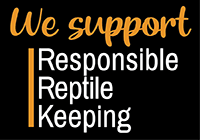Help, there are ants in my bioactive enclosure!!

So, you’ve noticed ants crawling around in your bioactive enclosure. Is it even something you should bother worrying about, or are they just annoying? And how do you get rid of them without harming your pet or CUC? The last thing you want is to have to tear apart an established vivarium and start over from scratch, so here are some bioactive-friendly ant solutions to try.
Can ants hurt pet reptiles and amphibians?
Cricket bites are a common concern, but what about ants? Just about any ant can bite. They may not be able to hurt you as a relatively thick-skinned human, but it can be a different story for reptiles, particularly amphibians or thin-skinned geckos. Considering that ants are more plentiful than crickets, ants can be potentially more irritating and even damaging to your pet. That said, some ants are more cause for worry than others:
Little black ants — These are your typical ant pest: small, dark brown/black, and more annoying than harmful. They’re too small to do much in the way of bite damage but can be difficult to get rid of in case of infestation.
Odorous house ants — These ants are named for the “rotten coconut” smell they produce when crushed. They’re found in every part of the USfg but are not particularly dangerous.
Citronella ants — These ants are named for the lemony smell they produce when bothered. They can be recognized by their yellow color and sometimes wings. Prone to swarm, so they’re annoying pests, but not particularly dangerous.
Ghost ants — Recognizable for their small size and pale color, they can be a particular problem for tropical gecko keepers since they like moist areas and sweet food (like the crested gecko diet).
Argentine ants — These ants are shiny brown/black in color and particularly common in the SE United States, as well as California and Hawaii. They prefer a moist environment which can be difficult to get rid of because one colony can have many queens rather than just one or two.
Pavement ants — Easy to recognize because of the mounds of dirt they pile around the entrances to their colony. If bothered, they will bite or sting.
Carpenter ants — These are your typical “big black ant.” They like moist, decaying wood, so they may be particularly attracted to vivariums (assuming they can find a way inside). Although their size makes them more of a biting concern, they actually pose more of a threat to your home; carpenter ants can infest the wood structure of a house and require an exterminator to eliminate them.
Fire ants — These red ants are unlikely to come into your home, but they are dangerous to humans and especially pets. They are aggressive and have a venomous sting that can cause pain, swelling, allergic reactions, and for small animals, even death. If you suspect your pet may have been stung by a fire ant, get them to the vet ASAP!
How to get rid of ants without scrapping your bio
It takes time and works to get everything established and balanced inside a bioactive terrarium. The last thing you want to do is have to destroy it all because of some pesky ants! But you also want to avoid exterminators and chemical ant traps to avoid potentially harming your CUC, or worse, your pet — so what other options do you have?
If the ants aren’t yet established, one of the most effective methods is to cut off the ants’ trail in/out of the vivarium with a perimeter of animal-grade diatomaceous earth. Diatomaceous earth is like walking barefoot across a field of razors for insects, so make sure to use it only outside the enclosure, not inside – or else your CUC will fall prey to it, too.
If there’s an established colony (for example, if you can see an ant hill inside the enclosure or you can see them tunneling under the soil), then the bad news is that there’s a higher chance of having to rip your vivarium apart in order to get rid of them. However, try stirring up the soil with a pencil or pair of feeding tongs every day for a week or so. Aside from being a good way to aerate your bio, disturbing the nest like this makes ants feel unsafe, and they are more likely to leave by their own choice. Just make sure to remove your pet to avoid the swarm, and give the ants a way out.
Whatever you do, avoid ant-related solutions which involve essential oils, as these are known to potentially irritate reptile lungs and may even cause neurological problems with enough exposure.
Once the ants are gone
If ants got into your enclosure once, there’s a good chance they’ll get in again eventually. Maintaining a perimeter around the base of the enclosure is usually enough to deter them. You can use diatomaceous earth or cinnamon, or if you don’t like the idea of sprinkling powder on your floor, try this:
- Make a paste of water, rubbing alcohol, and cornstarch. Paint the mixture on the lower part/base of the enclosure to make it impossible for ants to climb up. Reapply regularly to stay effective.
Of course, it’s most effective to do what you can to keep ants out of your home in the first place. Here are some popular methods:
- Make your own ant poison/bait. Mix together ½ tsp borax powder, 8 tsp sugar, and 1 cup warm water until dissolved. Soak cotton balls in the solution and put them around your house where you usually see ants. Keep away from pets and children.
- Check your houseplants. Ants are known to set up nests in houseplant soil. If you suspect that one of your plants is hosting a colony, remove the plant from its pot, rinse all of the soil off of its roots, and repot. Placing citrus peels on top of the soil helps deter other ants from making a new nest.
- Clean up pheromone trails. Ants rely on scent trails to find food and generally get around. Wiping surfaces with lemon juice after cleaning can help remove the scent. Alternatively, you can use a 1:1 solution of white vinegar and water.
- Keep your home clean. That’s easier said than done, but a home that is kept clean is less likely to attract ants. Pet kibble, food left out in unsealed containers, crumbs, etc. are huge ant attractants. Keep your floors mopped, carpets and couches vacuumed, counters wiped, and food put away, and ants will find your home a much less appealing place to visit.
Conclusion
Ants are annoying, but they don’t have to spell “The End” for your bioactive enclosure. Identify the ants involved, take the right steps to purge your enclosure, and make the effort to keep them out of your home in the first place.
Of course, sometimes even the most diligent efforts to remove ants fail for some reason or other. Is it really a big deal, or can you find a way to coexist? Ultimately, it depends on the ants. Fire ants and carpenter ants are legitimately dangerous, so the grim reality is that you’ll probably have to hire an exterminator if they’ve decided they want to share your home.
Image by Brigitte Werner from Pixabay
- Rebekah Walenta










